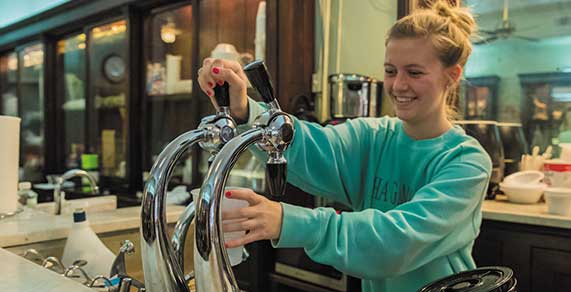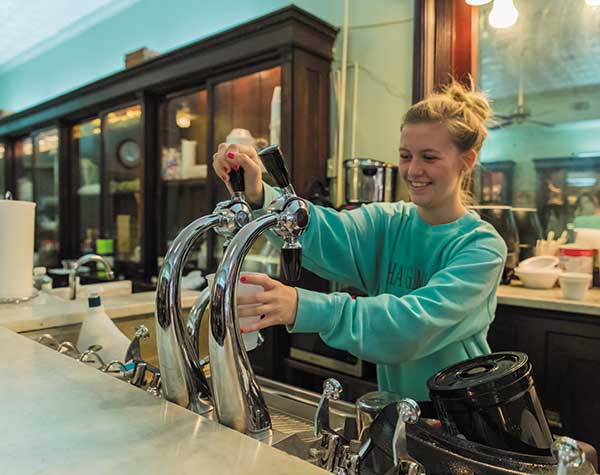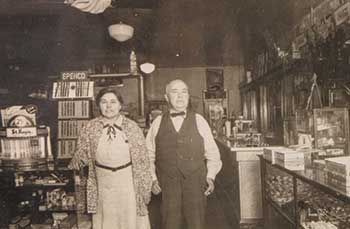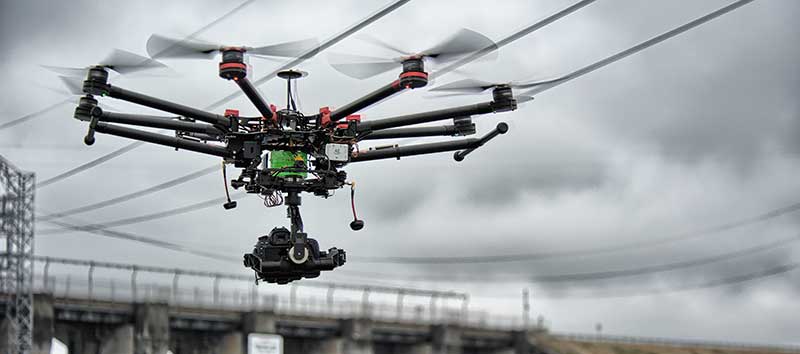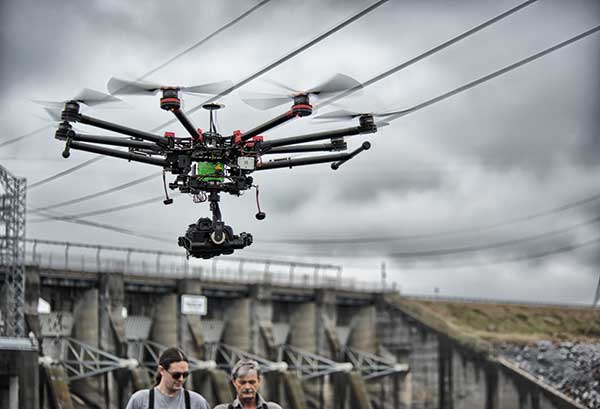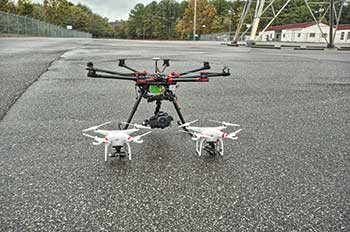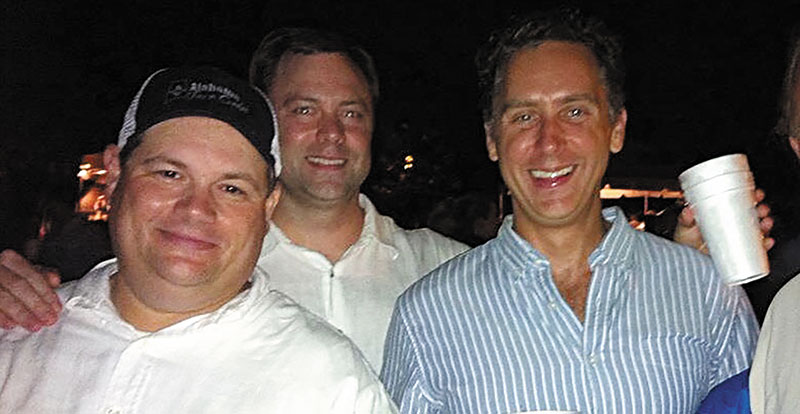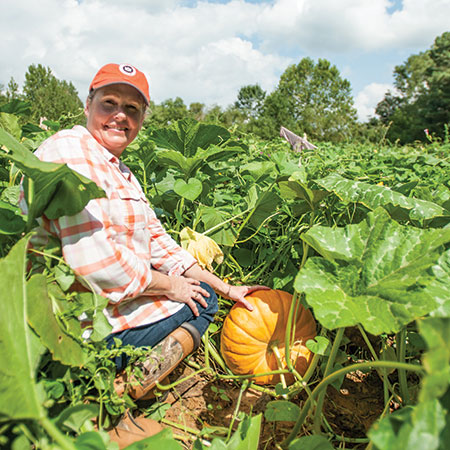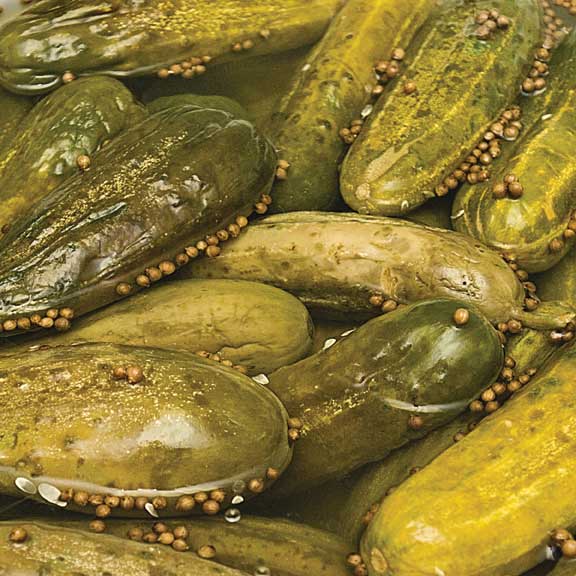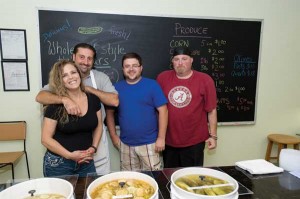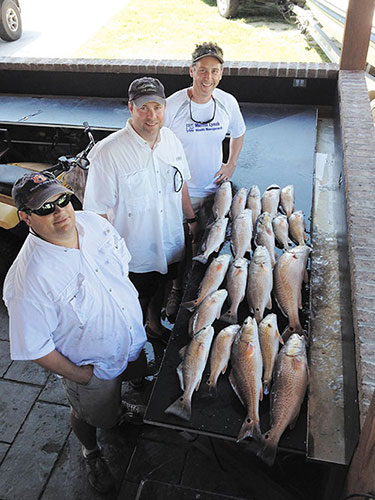 One PCHS graduating class, lots of talent
One PCHS graduating class, lots of talent
Story by Graham Hadley
Photos from Jim Tollison, Chad Richey, Adam Miller
Billions of dollars — money in the ten-digit range — is an astronomical sum, by any standards.
For a group of three close friends from St. Clair County, though, it is all in a day’s work. In fact, they are not only all from St. Clair County, they all graduated from Pell City in the same year — PCHS Class of ‘92.
Jim “Jimbo” Tollison is a vice president and the Talladega Branch manager for Alabama Farm Credit. Chad Richey is a senior vice president with a CFP designation from the Board of Certified Financial Planners and is working as a financial advisor for Merrill Lynch and as senior resident director for their office in Birmingham Southeast. And Adam Miller is an underwriting team leader for Regions Bank.
Though all of these men are very successful in the financial world, every single one of them cut their teeth in very different job markets: Chad working for his father’s timber company. Jim worked on his family farm and with his dad working on heavy machinery, then he and Adam ended up working for Rock Wool Manufacturing — a large insulation company in St. Clair.
And though Chad had an interest in finance, none of them really had any idea they would end up in top financial positions, and certainly not as quickly as they did.
All of them were what can conservatively be called “free spirits” in high school, and not everyone was even sure they would go to college.
“When Jimbo and I were young, we would run up and down I-20 as fast as we could go. You might not have thought we would be doing this today,” Chad said.
Chad Richey
“I grew up working for my dad in the excavation business, working heavy equipment since I was 14 years old. That will put a work ethic in you,” Chad said. He had always had an interest in finances, but getting from working in timber to what he likes to think of as a financial and investment educator had its pitfalls.
He got his degree from Birmingham-Southern College and was ready to work for Merrill Lynch.
“I went and took a test and they told me I was not qualified,” he said.
So he went back to work for his father’s company. “I was on a business call and ran into a guy from Morgan Stanley Dean Witter, he said come by and see if we have a job for you.”
As part of that process, Chad found himself in New York City in August 2001 — at one point at the top of the World Trade Center.
“I come home, go to work on Tuesday, and see those buildings come down. I cheated death. That is when I decided to get my priorities right and stop acting like Jimbo (Tollison) and I did when we were young. You only have a small time on the planet,” he said.
He knuckled down on his work — and he also settled down. “That is when I called up my, now, wife Janet. We got together and now we have three kids, Jack, 11; Robert, 9; and Guy, 5.
He tapped into his blue-collar work ethic instilled in him growing up — he still does — and things started moving his way.
“It’s a good upbringing. I come into this office and put a blue-collar attitude into it. I come in here and I work. In the beginning, I started out working late — it drove my wife crazy. I would come home around 9 at night. I was doing all these cold calls, it was hard work.
“Then I came over to Merrill Lynch running a small office, a starter job. Then I came here. I used that blue-collar attitude and it has served me well,” he said.
His office serves thousands of households and handles billions of dollars in investments.
“I have a big job at Merrill. I am not only a financial advisor on a team, I am the senior resident director of the office. I supervise every employee in this place. My team gives advice on over $240 million in assets, and my supervisory responsibility is around 3.3 billion in assets.”
The other half of his work, Chad sees himself as something of a financial guide for his clients.
“I was always intrigued by the way money works. I did not know what I wanted to do, but I was also good with people. That is perfect for what I do. I want every family to have a family financial strategy for the future,” he said. “The way I can make a difference in the world is to teach people to go out and save up enough money on their own without the government having to take care of them.
“That’s what keeps me going. You have to have a higher purpose, you can’t just come in here and charge people to make them money.”
Eventually, because of the commute from Birmingham to St. Clair, Chad moved his family to Mountain Brook. “I got tired of having to rush home and change clothes in the car in the civic center parking lot before my kids games. So we moved here,” he said. But St. Clair is never far from his heart.
“I wanted to bring the family closer to my work, and I am only 45 minutes away from Pell City when I want to come back,” he said.
And since he and his St. Clair friends like Jim have remained close, those trips come often.
Jim “Jimbo” Tollison
While Chad had an inkling he wanted to go into finance, Tollison had … none.
“I had not really planned on going to college. (Pell City High School teacher) Deanna Lawley encouraged me to go. She had grown up around Lewis Grizzard. I had always liked him, liked journalism, so I went to Jacksonville State University in journalism,” he said.
And he was just spinning his wheels.
He ended up back working with his Dad again on the family farm and in his business.
“I went on a service call — my Dad worked for a forklift repair company — to Rock Wool Manufacturing with him and they needed some workers. Dad said, ‘Hell, hire him.’ And that was the beginning of me working in insulation for the next few years.
“I would go to school during the year and work over the summer, work seven days a week, sometimes up to my armpits in insulation.”
In fact, at one point, he helped Adam get a job there, and the two of them worked together — the reality of working that job and a serious accident changed Jim’s outlook on life and on what he wanted to do.
“I had an accident, nearly burned my face off. Chad was there. We were burning some stuff and were stupid and used gasoline to start the fire. It blew up in my face. I spent two months in bandages — did not know if I would have a face,” Jim said.
Chad said he was the one who put Jim out that day.
It made Jim take a second look at the path he was on.
“I thought I would have to go to Atlanta to be a journalist. A lot of my professors told me you had to start out in a big city. I just realized it that was not where I wanted to be. I realized I loved the farm, agriculture, and wanted to do something with it. I got the best bad advice from those journalism professors,” he said.
When he went back to school, it was not to JSU, but to Auburn University and he enrolled in agriculture business.
“I ended up at Auburn. I did not want to go straight into business, so I did agriculture economics and business. I took 21 hours a quarter just about every quarter there. I had transferred in as a junior.
“I had an 8 a.m. weed-out class, micro economics, and it was not that tough. I started nailing it — blew the curves. …”
Jim wanted to go back to St. Clair, but his professors told him that was not a realistic place for him to start his career.
“I told them I would rather dig ditches in St. Clair than work anywhere else. I wanted to come back to the farm. I always wanted to come back here,” Jim said.
“The Federal Land Bank, now Alabama Farm Credit, came to Auburn and interviewed me for a job. I liked the idea because it gave me the perfect mix of business and agriculture, which I love,” Jim said.
Like Chad, Jim had inherited a strong work ethic growing up, and he put it to good use in his new job at their branch in Albertville.
“I had gotten a really good work ethic from both of my parents. If you want something, you work for it. My Dad started out this farm with nothing. He bought it from his parents,” Jim said.
He started out in Albertville as an entry-level loan officer and appraiser. “I worked there for four or five years, then took over the Talladega branch in 2001 right before Sept. 11 and the economy stopped. It was the smallest of everything we had in Alabama, but it was mine. I was not branch manager, but I was in charge.”
Under Jim’s direction, even in the worst of economic times, the Talladega office has flourished, bringing in millions and millions of dollars in well-grounded loans.
“We turned it around. It was grass roots. We went out and talked to people. We have been blessed. … We are still one of the smallest, but we have the best in collections and credit quality of anyone. And because we are a coop, we can return some of the profit in a good year to our clients. Last year, that was $6.3 million in 27 counties in North Alabama,” he said.
Jim and his family have remained in St. Clair, building their house on the old family farm he shares with his parents near Ragland.
Adam Miller
You would think Adam would have been a natural pick at an early age for a future in finances given that his father is banker Ray Miller — someone all three give lots of credit to as being a mentor and a huge influence on their ultimate decisions to go that route.
And you would be wrong.
Jim and Chad both refer to Adam as the one they thought would go far in college, the “smart one” and the voice of reason (Adam had just left the day Jim lit his head on fire — “I regret that. I probably would have been like, ‘Guys, that is not such a good idea.’”)
“We would be walking down the road, Chad and I would be picking up rocks and throwing them. Adam would be picking up rocks and looking for fossils,” Jim said.
Adam agrees, “When I was growing up, there was no way I was going to be a banker like dad. From a the time I was a little kid, I wanted to be a meteorologist. That lasted through three years of college.”
Like Jim, he was just spinning his wheels after high school.
And like Jim, he ended up at Rock Wool working long, hot hours.
“After I had wandered around Tuscaloosa for a few years, enrolled more than attended, I ended up at the insulation plant. After working in the insulation plant from 3 to 3, it did not make it so hard to get up for that 9 a.m. class,” Adam said.
He got back in school — and like the other two, had something of an epiphany.
“I took a finance class and it went well and took another one that summer, loved that. It played into the analytical things I liked in science. I did not think I had an aptitude for math — as my high school teachers will attest to. But I had an aptitude for finances,” he said.
He was taking classes at JSU and credits several of the professors there with inspiring him and helping develop a work model he still employs today. One in particular, Professor Brown, would not only grade students’ tests, he would grade his own teaching — if everyone missed something, he would strike the question and reteach that.
“He had high expectations of us and himself. That is what I carry over into our business today. If I ask someone to do something, I have to be willing to do it at least as well,” Adam said.
Today, Adam is a regional underwriting manager for Regions Bank and is based out of Hoover, but before he got there, “I did a bit of everything” from getting his real estate license to working in manufacturing.”
“At Regions I have two underwriting teams serving the Eastern Time Zone for businesses under $20 million in revenue. It could be anything from medical practices to manufacturers. It’s a broad swath of the small-business sector.”
Their loan portfolio is in the $4 billion range. “That is what I am kind of held accountable for,” he said.
Much like his two friends — though their jobs are very different in nature — at the core is a desire to help people and businesses.
“What I do really is evaluate risk and propose solutions. The rewarding part of the job is digging in, getting to understand someone’s business and providing them with the appropriate credit for their needs, to help them manage their risks and grow their business in a healthy manner,” he said.
And like Chad and Jim, it is that strong work ethic learned growing up and forged working tough jobs early on that Adam says helped make him a success.
“It’s the same thing I tell everyone every day: I bring my lunch-pail mentality to work. Be glad for what you have and realize that there is a long line of people who would love to have the same opportunity I have. I come in and I work hard,” he said.
“There is no magic bullet. It’s that attitude of we can do this, whatever it may be. …
“And I was the guy who would be more apt to pick up the rock and examine it. It goes back to my analytical nature, and it goes to how I see business today. I don’t just see the rock, the business; I look at the whole business, look at how it works,” he said.
Working … and playing … together
Though they are all in very different finance jobs and separated by miles, the three friends remain close and see each other as often as they can.
“We are still good friends. We have never lost touch. We don’t get to hunt or fish as much as we would like — mostly because we have eight kids between us. But we are still tight and it make us cherish the time we have together better,” Adam said.
And they have no trouble mixing business and fun — often at the Tollison Farm.
“Next week, we are going to have a dove hunt here at the farm,” Jim said. “We will have Chad’s customers; we will have my customers. We will have food. Why not have a group of customers out here on the farm and make it work for you?”
They also often find it necessary to refer clients to each other. Jim will have a farmer client who needs estate planning services or needs financial advice, so he sends him to Chad.
“Sometimes, in my work, I will see people who need financial advising. Chad can help them do the things they need to do,” Jim said.
Likewise, Chad has referred some of his clients who are interested in branching out into agriculture to Jim.
Of course, it is not just the three of them anymore — like Chad, both Jim and Adam have families, so when the three friends get together, the party is somewhat bigger these days.
“My wife, Emily, and I were married in June of 2005 and have three children: Hudson, 7; Hayes, 4; and Mary Brooks, 2,” Adam said. Jim and Brooke Tollison were married the same year and have two children, Jay and Claire.
But at the core of everything is their friendship.
“We stuck together. Me and Adam and Jimbo are still good friends today. I took Adam to the Alabama game a couple of weeks ago,” Chad said, adding jokingly, “For Jim, of course, that would have been a punishment. He did email me, saying ‘Y’all don’t care about me anymore.’”
Adam said they each bring something uniquely their own to their relationship; they approach life differently, and that has been part of what cements their friendship.
“In all honesty, Jim needs to know how proud I am of him and his accomplishments, what he brings to the table as a friend and confidant. Chad is different, but also great. Chad had to work really hard to get where he is.
“They bring so much balance to the table. I would love to do a personality test on us, but I would bet it would show we all approach problem solving from a different angle,” Adam said, again, pointing out he is the voice of reason.
“I am probably the dead weight with that bunch, but was always glad to be along for the ride.”
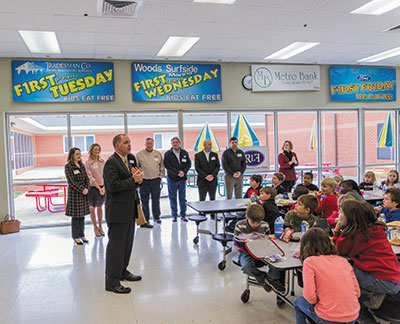 Businesses band together to help feed children
Businesses band together to help feed children













